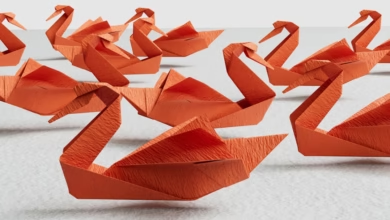Jewelry Metals Explained: The Role of Gold, Silver, and Platinum in Sustainable Design and Future Trends

Jewelry has long been a symbol of beauty and status, but the choice of metals used in crafting these adornments plays a crucial role in their appeal and value. In this article, we will delve into the fascinating world of jewelry metals, focusing on precious metals like gold, silver, and platinum, as well as the broader landscape of industrial metals. Understanding the differences between ferrous and non-ferrous metals, as well as the significance of metal alloys, is essential for both consumers and designers alike.
As the jewelry industry evolves, so too does the importance of sustainable metal production and recycling. With growing awareness of environmental concerns, practices such as metal recycling are becoming increasingly vital, shaping how jewelry is designed and crafted. Furthermore, the exploration of metal trends, including the usage of rare earth metals and innovative techniques like 3D printing, is transforming the future of jewelry design.
Join us as we explore the multifaceted role of metals in the jewelry industry, examining how gold investing, silver investing, and the impact of base metals influence style and sustainability. From the intricacies of metallurgy to the latest in metal fabrication, this article will provide a comprehensive overview of how jewelry metals are crafted, recycled, and celebrated in today’s market.
- 1. Understanding Jewelry Metals: The Role of Precious and Industrial Metals in Crafting
- 2. The Impact of Metal Recycling and Sustainable Production on Jewelry Design
- 3. Exploring Metal Alloys: How Gold, Silver, and Platinum Shape the Future of Jewelry Trends
1. Understanding Jewelry Metals: The Role of Precious and Industrial Metals in Crafting
Jewelry crafting relies heavily on a variety of metals, each playing a distinct role in the design, durability, and overall appeal of the final product. Understanding the differences between precious and industrial metals is crucial for both jewelers and consumers.
Precious metals, such as gold, silver, and platinum, have long been favored in jewelry making due to their rarity, beauty, and resistance to corrosion. Gold, for example, is not only a valuable metal but also a versatile one; it can be alloyed with other metals to create various colors and enhance its properties. Silver, known for its brilliant luster and affordability compared to gold, remains a popular choice for both fine jewelry and fashion pieces. Platinum, while less common, offers exceptional durability and a striking appearance, making it ideal for high-end jewelry, particularly in engagement rings.
On the other hand, industrial metals, including copper, aluminum, and zinc, serve a different purpose in the jewelry-making process. These base metals are often used in metal alloys, which can enhance the strength and resilience of jewelry pieces while also reducing costs. For instance, copper is frequently alloyed with silver to create sterling silver, improving its hardness and making it more suitable for everyday wear.
The world of metal mining and metallurgy also impacts jewelry crafting. As the demand for sustainable metal production increases, jewelers are turning to recycled metals and eco-friendly practices. Metal recycling not only conserves resources but also addresses the environmental concerns associated with traditional metal extraction processes. Additionally, trends in metal commodities and the rise of 3D printing metals have opened new avenues for innovative jewelry designs, allowing for intricate patterns and custom shapes that were once difficult to achieve.
In recent years, the exploration of rare earth and battery metals, such as lithium and palladium, has gained momentum. While these are primarily associated with technology and energy sectors, their unique properties can also influence jewelry crafting, particularly in the creation of specialized pieces that integrate modern materials.
Overall, understanding the roles of precious and industrial metals in jewelry is essential for creating high-quality, aesthetically pleasing, and sustainable pieces. As metal trends continue to evolve, jewelers must remain informed about advancements in metallurgy and fabrication techniques to stay competitive in the ever-changing market.
2. The Impact of Metal Recycling and Sustainable Production on Jewelry Design
The jewelry industry is increasingly recognizing the importance of sustainable practices, particularly through metal recycling and sustainable production methods. This shift not only addresses environmental concerns but also influences design choices in the creation of jewelry.
Metal recycling plays a crucial role in the conservation of precious metals such as gold, silver, and platinum. By reusing these metals, jewelers can reduce the demand for new metal mining, which often has detrimental environmental impacts. Metal mining can lead to habitat destruction and significant energy consumption, making the case for recycled materials even stronger. As the focus on sustainability grows, many designers are opting for recycled metals in their creations, promoting a circular economy within the jewelry sector.
In addition to precious metals, the industry can also benefit from recycling base metals such as copper and aluminum. These non-ferrous metals are commonly used in metal alloys, enabling jewelers to create unique pieces while minimizing their carbon footprint. The integration of industrial metals into jewelry design not only adds diversity but also appeals to environmentally conscious consumers.
Sustainable metal production methods—such as those that utilize 3D printing metals—have also emerged as game-changers in jewelry design. This innovative approach allows for more complex designs and reduces waste compared to traditional metal fabrication techniques. By leveraging advanced metallurgy, jewelers can create intricate designs with minimal material usage, further supporting sustainability initiatives.
Moreover, the rise of eco-friendly practices in the jewelry industry aligns with current metal trends, where consumers increasingly seek ethically sourced products. Gold investing and silver investing are now often accompanied by discussions about the responsible sourcing of these metals. This consumer awareness has prompted jewelers to disclose the origins of their materials, ensuring transparency in the supply chain and promoting responsible practices.
As the jewelry market evolves, the emphasis on metal recycling and sustainable production is reshaping how designers approach their craft. By incorporating recycled precious and base metals, along with innovative production techniques, the industry can not only meet the growing demand for sustainable jewelry but also redefine the standards of quality and design in this competitive market.
In summary, the impact of metal recycling and sustainable production on jewelry design is profound, providing both environmental benefits and exciting new avenues for creativity. The future of jewelry metals lies in responsible sourcing and innovative approaches that honor both the art of jewelry making and the planet.
3. Exploring Metal Alloys: How Gold, Silver, and Platinum Shape the Future of Jewelry Trends
The jewelry industry is undergoing a significant transformation as designers and consumers alike are increasingly interested in the properties and applications of various metal alloys. Gold, silver, and platinum have long been the staples of jewelry crafting, but their combinations with other metals are shaping future trends in innovative and sustainable ways.
Exploring metal alloys, particularly those involving precious metals like gold, silver, and platinum, allows jewelers to create unique designs while enhancing the durability and affordability of their pieces. For instance, mixing gold with base metals, such as copper or zinc, results in various gold alloys that can alter color and strength. This is crucial for jewelry that is subject to wear and tear, as metal corrosion can significantly affect a piece's longevity. Similarly, platinum alloys, often combined with palladium or iridium, enhance the metal's natural resistance to tarnish and scratching, making it an ideal choice for everyday wear.
The rise of sustainable metal production practices is also noteworthy as consumers become more environmentally conscious. Jewelry brands are increasingly turning to metal recycling to source precious and industrial metals. This not only reduces the environmental impact associated with metal mining but also addresses the growing demand for ethically sourced materials. The incorporation of rare earth metals and battery metals into jewelry design is another emerging trend, as they are often associated with modern technology, such as 3D printing metals, which is becoming a popular fabrication method in the industry.
In addition to aesthetics and sustainability, the performance of jewelry metals is evolving. For example, aerospace metals and energy metals are being explored for their unique properties, which can contribute to innovative jewelry designs that are lightweight yet durable. As the market for gold investing and silver investing continues to grow, the demand for alloys that blend these precious metals with more affordable options will likely increase, appealing to a broader consumer base.
The interplay of metallurgy and design is leading to the creation of jewelry that not only reflects personal style but also addresses modern concerns such as sustainability and resilience. As trends continue to evolve, the future of jewelry will undoubtedly be shaped by advancements in metal alloys and the innovative ways they can be utilized within the industry.
By understanding these trends and the characteristics of various metals—from ferrous to non-ferrous, and from steel to aluminum—jewelry designers can push the boundaries of traditional craftsmanship while appealing to a new generation of conscientious consumers.
In conclusion, understanding the intricate world of jewelry metals, including gold, silver, and platinum, is essential for both consumers and creators in the jewelry industry. The blend of precious and industrial metals plays a crucial role in crafting unique pieces that resonate with personal style and current trends. As we move towards a more sustainable future, the significance of metal recycling and sustainable metal production cannot be overstated. These practices not only reduce the environmental impact of metal mining but also support the growing demand for responsible sourcing in jewelry design.
Moreover, the exploration of metal alloys demonstrates how innovations in metallurgy and metal fabrication are shaping the future of jewelry trends. By incorporating various base and rare earth metals, jewelers can create pieces that are not only aesthetically pleasing but also durable and resistant to metal corrosion. As the market for gold investing and silver investing continues to evolve, understanding these metals' properties and their applications in jewelry becomes increasingly relevant.
As we embrace advancements in technologies like 3D printing metals, the possibilities for custom jewelry are expanding, allowing for greater creativity and personalization. Emphasizing the importance of both precious and non-ferrous metals in this artistic expression will ensure that the jewelry industry remains vibrant and adaptable. By staying informed about metal trends and sustainable practices, we can appreciate the beauty and craftsmanship of jewelry while also contributing to a more responsible and eco-friendly future.
References:
(Include citations for sources used in the article)





